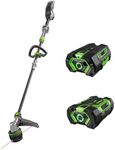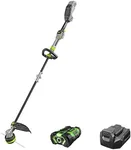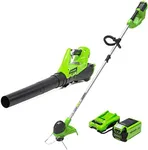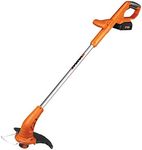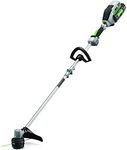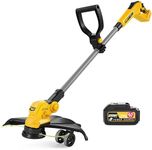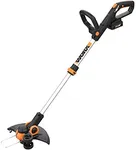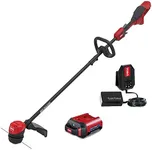Buying Guide for the Best Battery Powered Weed Eaters
Choosing the right battery-powered weed eater can make your yard work much easier and more efficient. When selecting a weed eater, it's important to consider several key specifications to ensure you get a model that fits your needs. Understanding these specs will help you make an informed decision and find a weed eater that is powerful, durable, and easy to use.Battery VoltageBattery voltage indicates the power output of the weed eater. Higher voltage generally means more power, which can be useful for tougher weeds and larger areas. Weed eaters typically range from 18V to 80V. For light trimming and small yards, a lower voltage (18V-24V) may be sufficient. For medium to large yards with thicker weeds, consider a mid-range voltage (36V-40V). For heavy-duty use and large properties, a higher voltage (56V-80V) will provide the necessary power.
Battery Capacity (Ah)Battery capacity, measured in ampere-hours (Ah), determines how long the weed eater can run on a single charge. Higher capacity batteries will last longer but may also be heavier. Common capacities range from 2.0Ah to 5.0Ah or more. For small yards or quick jobs, a lower capacity (2.0Ah-2.5Ah) may be adequate. For larger yards or extended use, a higher capacity (4.0Ah-5.0Ah) will provide longer runtime and reduce the need for frequent recharging.
Cutting SwathThe cutting swath is the width of the area the weed eater can cut in a single pass. A wider cutting swath means you can cover more ground quickly, but it may also be harder to maneuver in tight spaces. Cutting swaths typically range from 10 inches to 16 inches. For small, intricate areas, a narrower swath (10-12 inches) is more manageable. For larger, open areas, a wider swath (14-16 inches) will help you finish the job faster.
WeightThe weight of the weed eater affects how easy it is to handle and use for extended periods. Lighter models are easier to maneuver and less tiring, but they may have less power or shorter battery life. Weed eaters can weigh anywhere from 5 to 15 pounds. If you have a small yard or need to use the tool for long periods, a lighter model (5-8 pounds) is preferable. For more demanding tasks, a slightly heavier model (9-15 pounds) may offer better performance and durability.
AdjustabilityAdjustability features, such as telescoping shafts and adjustable handles, allow you to customize the weed eater to your height and comfort. This can reduce strain and make the tool easier to use. Look for models with adjustable shafts and handles if you plan to use the weed eater for extended periods or if multiple people of different heights will be using it. This ensures a comfortable and ergonomic experience for all users.
Line Feed SystemThe line feed system determines how the cutting line is dispensed. There are three main types: bump feed, automatic feed, and fixed line. Bump feed requires you to tap the head on the ground to release more line, giving you control over the line length. Automatic feed systems release line as needed without user intervention, which is convenient but can be less precise. Fixed line systems use pre-cut lengths of line, which are easy to replace but may require more frequent stops. Choose a line feed system based on your preference for control and convenience.
